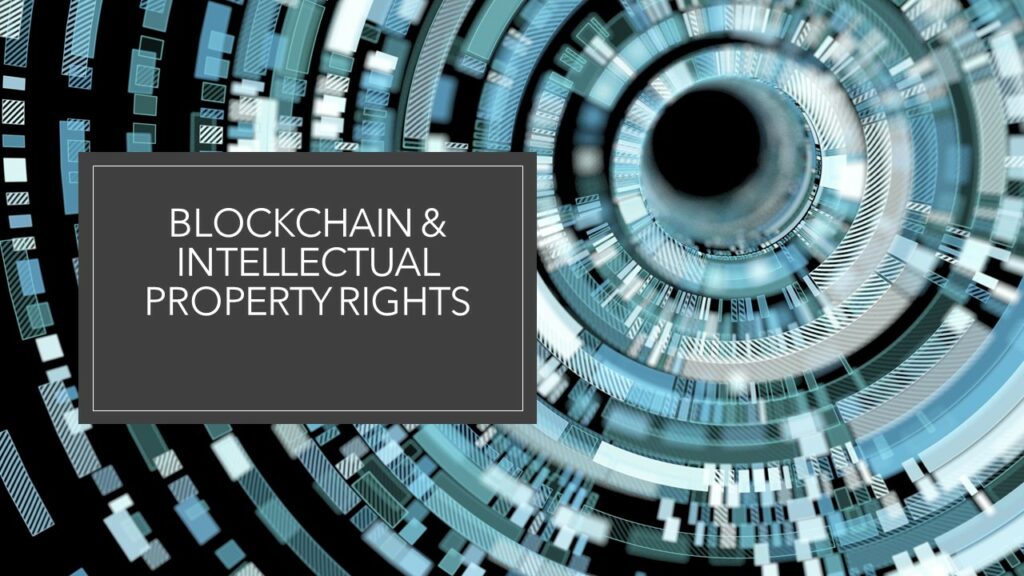
Tel: : 416-748-9236

Author: Marsha S. Cadogan, MSC Intellectual Property and Technology Law
2020 is bound to be a year marked with the development of greater and more sophisticated technologies. This will likely be the same narrative in the blockchain and distributed ledger technology (DTL) space. What are the most relevant relationships between intellectual property and blockchain and DTL? See three relevant intersections below:
Blockchain and DTL are shared databases that record and store data about transactions on ledger type de-centralized computer platforms (see IPIC Unscripted, “How Blockchain is Changing the Trademark Space, Marsha S. Cadogan). The data is created and stored in encrypted keys within each block. The chain is produced based on strong relational connections between the preceding and subsequent nodes on the platform. Each transaction along the chain is created and exist only if it is verifiable with relevant data recorded and stored on the previous block. Characteristics such as the use of encrypted data, the restriction of data production on subsequent blocks to only what corresponds with previously inputted information, and the inability to alter information recorded on blockchain have informed the position that the technology is immutable.
The most relevant disruption caused and intended by blockchain and DTL, is that its objective is to remove intermediaries from commercial transactions, and connect without barriers, the purchaser and seller of services. It is either being used or tested in the financial, healthcare, tax collection, currency and other sectors to replace traditional ways of doing business. This includes its use to: send money to persons all over the world (money remittances), purchase healthcare services, create bitcoins and other alt-currencies to replace conventional currencies, and to verify the authenticity and provenance of products.
Blockchain and DTL is likely to intersect with intellectual property in 2020 and beyond in the following ways:
Catalyst for Innovation
The rise of interest in the technology create prospects for start ups and tech-based companies to develop further advances in its use. This includes addressing the platforms current technological limitations. There is an opportunity to create stronger synergies between the tech-based output of Canadian research institutions and local industries. This may spur more increases in patent filing activities related to blockchain in Canada.
More Pronounced Connections in Links between Blockchain and Place-based Goods (Trademarks and Geographical Indications)
Much of the lure in blockchain is in its ability to record and store transactional data, thereby providing historical information about different activities. For place-based goods, meaning products whose reputation in the market place is primarily driven by where it is from, and how it is produced, connections with blockchain and DTL may help to bolster brands in consumer markets. Blockchain is already being used to register and maintain trademark rights. The platform is used to verify and authenticate trademark products by using encoded tags to indicate that the product comes from where it is claiming to originate from. Using the technology to indicate that certification mark products comply with specific standards may be a relationship cogitated and performed on the platform in the next few years. However, this remains a tricky relationship. If the technology becomes mainstream globally, including in regions and countries where access to technologically resources to use the platform is compromised or unstable, then how widely it is used by IP intensive businesses becomes uncertain.
An alternative to traditional Copyright Management Platforms?
Two of the most pressing challenges facing copyright holders involve accurately identifying infringements in digital environments, and how best to receive royalties for their works in global markets. There is both interest and actual engagement with blockchain platforms to manage copyright for rights holders. As the technology era becomes more advanced, strong ties between blockchain and copyright management will likely ensue. This includes taking mainstream the concept of blockchain platforms that create tailored usage rights based on what users want to do with the rightsholders’ creation. The technology may also be able to track and record how the license is being used. For example, using a blockchain platform, the copyright owner of a digitized painting may grant a right of access as one dimension of authorized use, and a different license to modify the digitized painting – all tracked on the chain. The idea is to create separate license for each copy of the work.
On the point of revenue share, smart contracts (absent technological and security glitches) allow automatic payments for transactions between users and rightsholders performed along the chain. There is no middle man, thereby cutting out collective societies, streaming services and other similar affiliates. How independent blockchains are from intermediaries may impact how beneficial such platforms are to copyright holders. For example, if a large scale streaming enterprise also operates a blockchain platform, the fee payable by the copyright holder to use the blockchain service may also include hidden fees to compensate for the loss incurred from not using the streaming service.
There are many unsettled aspects of blockchain technologies use and relevance in the intellectual property rights and policy space that need to be addressed (on a domestic and international level). Privacy and ethical concerns, whether smart contracts can be challenged, the interoperability and scalability of blockchain, and how the technology competes with traditional intellectual property service and platforms, are pressing challenges for which solid resolution is needed. These challenges may impact how sustainable a connection there is between blockchain and intellectual property.
This post is for general information only and is not meant to be legal advise.